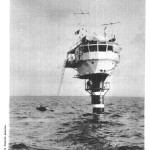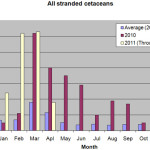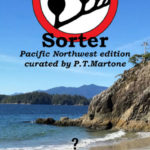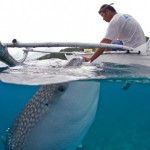Score one for Oceana and the New England Fisheries Management Council. Actually, score them fifteen. The two groups recently announced they have laid the foundations for designating 15 deep-sea canyons off the coast of New England as Habitat Areas of Particular Concern in an effort to build a more sustainable groundfish fishery.
Press release follows below from BYM Environment News.
The New England Fishery Management Council had laid the foundation to protect unique marine habitat by designating a series of canyons and seamounts from Maine to the Chesapeake Bay as Habitats of Particular Concern (HAPC). The Council is also considering Oceana’s revised proposal to designate parts of the Great South Channel as HAPC because it provides critical juvenile cod habitat.
The Council designated as HAPC 15 deep-sea canyons, some larger than the famed Grand Canyon in Arizona, and known to contain deep sea corals and other long -lived soft corals, sea fans and sponges: Heezen, Lydonia, Oceanographer, Baltimore, Toms, Gilbert, Hendrickson, Alvin, Norfolk, Hydrographer, Veatch, Atlantis, Hudson, Wilmington and Washington. In addition, the Council designated as HAPCs the Bear and Retriever seamounts to prevent the loss of this refuge for slow-growing fish and corals.
“Protecting marine habitat is crucial to rebuilding New England fishery populations,” said Gib Brogan, Oceana’s New England campaign projects manager. “These decisions will be the foundation of on-the-water management actions that the Council will develop in the coming year.”
Cod have been dwindling in the northwest Atlantic for more than 20 years because commercial fishing caught too many and destroyed their habitat. During the past two decades, the federal government has spent close to $100 million on disaster relief for fishermen. Most recently Massachusetts’ Governor Patrick asked the federal government for $22 million in aid for groundfish fishermen.
“We congratulate the Council for taking these important steps to build a sustainable groundfish fishery in the federally managed waters off the northeast U.S. coast,” said Dave Allison, Director of Oceana’s Campaign to Stop Destructive Trawling. “Identification and recognition of these unique and valuable areas is particularly essential as the council moves toward ecosystem management of the waters and marine wildlife of the region,” said Allison.
Dr. David Pierce, who holds the State of Massachusetts seat on the Council, was an outspoken advocate for habitat conservation at the meeting. At his urging, the Council decided to send Oceana’s revised HAPC proposal for parts of the Great South Channel, southeast of Cape Cod, back to the Habitat Plan Development Team for further review. The proposal was identified at the meeting by the Northeast Fisheries Science Center as incorporating places that are important Atlantic Cod nursery grounds.
“Designation of the Great South Channel will give this important area the extra attention that it needs as the Council develops management actions in the near future,” said Gib Brogan. “We need healthy nursery habitats to protect the next generation of cod if the cod populations are going to be rebuilt.”
Oceana’s work to protect deep-sea corals is supported in part by The Tiffany & Co. Foundation. Its work with fishery management councils is supported in part by The Streisand Foundation.
Oceana organizes campaigns to protect and restore our oceans. Campaign teams of marine scientists, economists, lawyers and advocates seek specific policy outcomes to help stop the irreversible collapse of fish stocks, marine mammal populations and other sea life.
Last Updated ( Monday, 25 June 2007 )





